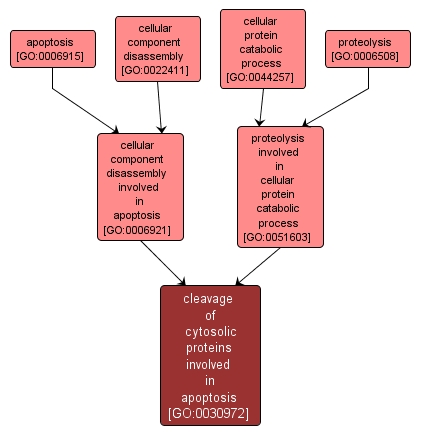GO TERM SUMMARY
|
| Name: |
cleavage of cytosolic proteins involved in apoptosis |
| Acc: |
GO:0030972 |
| Aspect: |
Biological Process |
| Desc: |
The proteolytic degradation of proteins in the cytosol that contributes to apoptosis. |
Synonyms:
- apoptotic cleavage of cytosolic proteins
|
|

|
INTERACTIVE GO GRAPH
|














